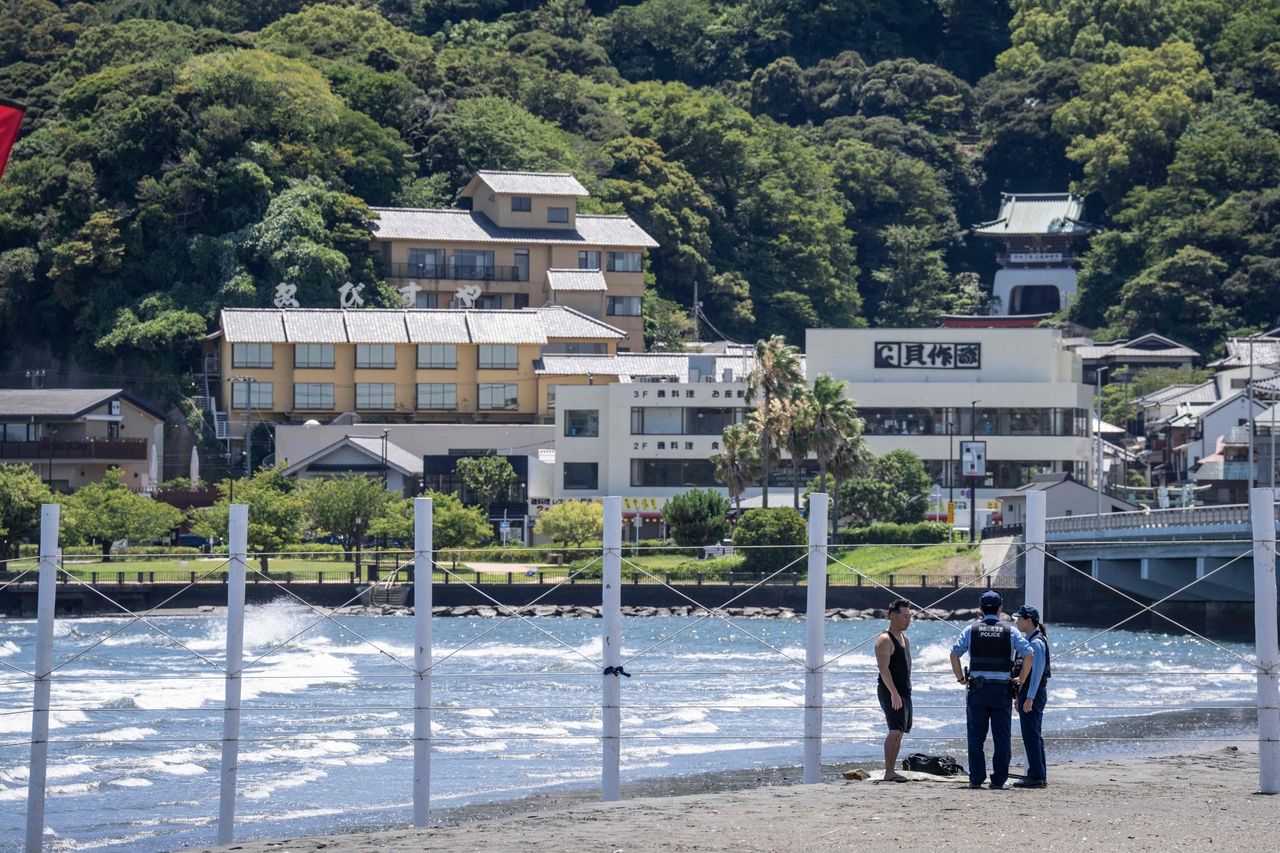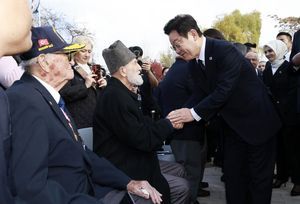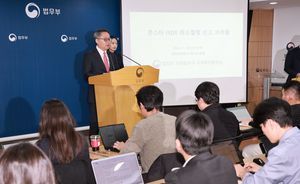TOKYO (AP) — One of the world’s strongest earthquakes struck Russia’s Far East early Wednesday, an 8.8-magnitude quake that triggered a tsunami in the northern Pacific region. Authorities issued warnings for Alaska, Hawaii, and other coastal areas extending south to New Zealand. While several locations advised evacuations, no major injuries have been reported so far.
In Honolulu, streets and highways were gridlocked as tsunami alerts coincided with Tuesday’s afternoon rush hour. Warning sirens blared, prompting residents to move to higher ground. Hawaii schools canceled all after-school and evening activities.
The Japan Meteorological Agency reported a tsunami measuring 50 centimeters at Ishinomaki port in northern Japan, the highest reading among several locations in the region.
Russian areas nearest the quake’s epicenter on the Kamchatka Peninsula reported damage and evacuations, but no serious injuries.

“Urgent action should be taken to protect lives and property,” the warning stated. The first waves were expected around 7 p.m. Tuesday local time.
On Facebook, the Oregon Department of Emergency Management announced that small tsunami waves were expected along the coast starting around 11:40 p.m. local time, with wave heights between 30 to 60 centimeters. They urged people to avoid beaches, harbors, and marinas, and to stay in safe locations away from the coast until the advisory is lifted.
“While this is not a major tsunami, dangerous currents and strong waves may pose risks to those near the water,” the department cautioned.
A tsunami advisory remained in effect for much of the West Coast, including Canada’s British Columbia province, Washington state, and California.
The quake struck at 8:25 a.m. Japan time, initially registering a magnitude of 8.0, according to Japanese and U.S. seismologists. The U.S. Geological Survey later revised its measurement to 8.8 and reported that the quake occurred at a depth of 20.7 kilometers.
The epicenter was located about 119 kilometers east-southeast of Petropavlovsk-Kamchatsky, a Russian city of 180,000 on the Kamchatka Peninsula. Multiple aftershocks, some as strong as 6.9 in magnitude, followed.
The first tsunami wave hit the coastal area of Severo-Kurilsk, the main settlement on Russia’s Kuril Islands in the Pacific. Local Governor Valery Limarenko assured that residents were safe and staying on high ground until the threat of additional waves subsided.
![A woman watches a television broadcast of a tsunami warning for much of coastal Japan following a 8.7 magnitude quake in the sea off eastern Russia, outside a gaming shop in central Tokyo on Wednesday. (AFP via Yonhap)]](https://contents-cdn.viewus.co.kr/image/2025/07/CP-2023-0309/31142682_1.jpg)
This earthquake appears to be the strongest recorded worldwide since the 9.0-magnitude quake off northeast Japan in March 2011, which triggered a massive tsunami and led to meltdowns at a nuclear power plant. Only a handful of stronger earthquakes have ever been documented globally.
The tsunami alert disrupted transportation in Japan. Ferries connecting Hokkaido and Aomori on the northern tip of Japan’s Honshu island were suspended, as were services between Tokyo and nearby islands. Some local train operations faced suspensions or delays, according to operators. Sendai Airport temporarily closed its runway.
Japan’s Fire and Disaster Management Agency reported no injuries or damages so far. In response to the tsunami alert, the agency issued an evacuation advisory to over 900,000 residents in 133 municipalities along Japan’s Pacific coast, from Hokkaido to Okinawa. The number of people who actually took shelter was not available.
Japanese nuclear power plants reported no abnormalities. Tokyo Electric Power Company Holdings, which operates the tsunami-hit Fukushima Daiichi nuclear power plant, stated that about 4,000 workers are sheltering on higher ground at the facility while remotely monitoring the plant’s safety.
Philippine authorities warned provinces and towns along the archipelago’s eastern coast facing the Pacific about possible tsunami waves of less than 1 meter and advised people to stay away from beaches and coastal areas. “While the waves may not be the largest, they can persist for hours and pose dangers to those in the water,” Teresito Bacolcol of the Philippine Institute of Volcanology and Seismology told The Associated Press.
New Zealand authorities issued warnings about “strong and unusual currents and unpredictable surges” along coastlines throughout the country. The government’s emergency management agency advised people to leave the water, stay off beaches and shore areas, and avoid harbors, marinas, rivers, and estuaries.
New Zealand is located in the South Pacific, approximately 9,600 kilometers from the earthquake’s epicenter.
This quake was the strongest to hit the Kamchatka Peninsula since 1952, according to the local branch of the Geophysical Survey of the Russian Academy of Sciences.
They noted that while the situation “was under control,” risks of aftershocks remain—potentially lasting for up to a month—and warned against visiting certain coastal areas.
Earlier in July, five powerful quakes struck near Kamchatka, the largest measuring 7.4 in magnitude. This quake occurred at a depth of 20 kilometers and was located 144 kilometers east of Petropavlovsk-Kamchatsky.
On November 4, 1952, a magnitude 9.0 quake in Kamchatka caused damage but no reported fatalities, despite generating 9.1-meter waves in Hawaii.









Most Commented